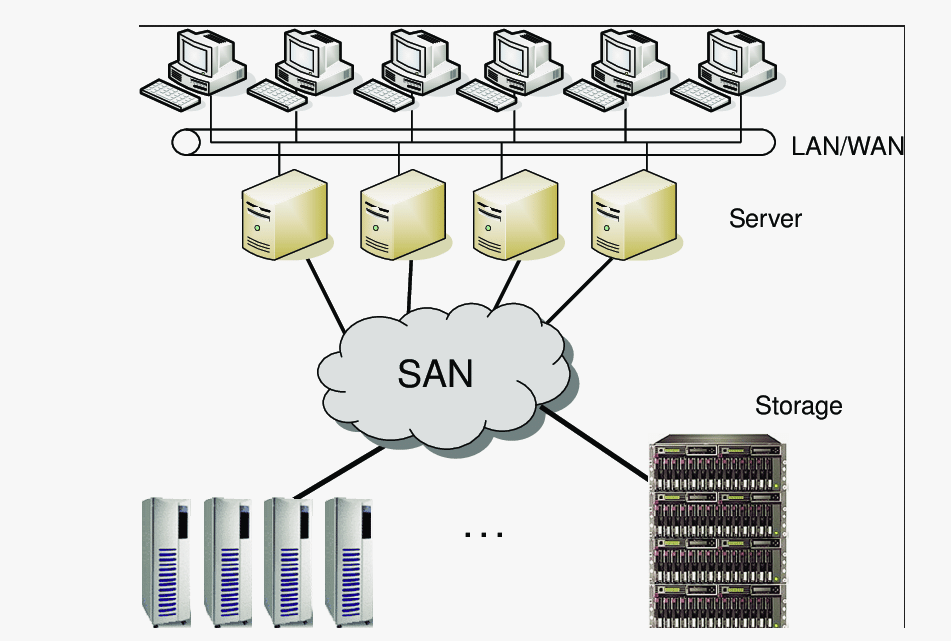Businesses generate and depend on more data than ever in this modern world. Data has become the centre of today’s world, from handling real-time customers’ databases and cloud applications. A massive amount of data requires effective data management. However, adequate data management cannot be met simply by providing disk space; it needs to be marked by speed, reliability, and elasticity. While traditional methods like tape storage have been used for archival purposes, as data demands evolve, so must your storage solutions. This is where SAN (Storage Area Network) storage comes in. This sort of storage is a high-speed network that links data storage devices to servers and applications.
Upgrading to SAN storage is not just about keeping up with the times; it’s about unlocking more extraordinary performance and control over your data. Whether handling large-scale applications or ensuring business continuity, this storage can propel your operations into the future, offering advantages surpassing older methods like tape storage. In this blog, we’ll explore five compelling reasons why switching to SAN storage is time and how it can transform how you manage data.
Enhanced Data Accessibility and Performance
One of the most significant benefits of using SAN storage is its capacity to provide lightning-fast data access. SAN is an expert system for managing high-yielding workloads, which organizations require faster and more accurate information access to massive data storage devices. On the other hand, traditional tape storage is optimal for backup and storage. Still, SAN storage offers real-time access that is meaningful in the latter applications and essential in modern applications and processes requiring fast response.
SAN solutions enhance data availability since it becomes a network of storage that then interfaces with the connecting servers. Hence, it is available for simultaneous access without requiring a long wait. This means enterprise applications can perform better and, thus, have higher productivity. Transitioning from tape storage to SAN implies shifting from a location notorious for slow access to a storage system purposely built to allow fast access.
SAN storage is beneficial for launching processes tied to database-line applications, virtual machines, or extensive information analysis for organizations that require smooth data transfer. This leads us to the next significant advantage we will discuss – scalability.
Scalability to Meet Growing Data Demands
As your business grows, so do your data storage needs. While traditional tape storage can be safe for long-term retention, it needs flexibility for constantly updated data. Meanwhile, SAN storage structures the storage of your infrastructures to expand quickly to meet Consumer demand.
SAN can double up your storage capacity without affecting the performance or disrupting the nature of the business. The ability to scale up or down based on your specific requirements ensures that you’re not paying for storage you don’t need, nor are you running out of space when you need it most. Unlike the fixed capability mode of traditional storage, the Storage Area Network is a flexible environment where capacity can be extended without business interruption, making it adaptive to the flow of business trends.
This data storage scalability further leads to another critical benefit of SAN storage – data backup/ protection.
Improved Data Redundancy and Security
SAN storage excels in data security, which is the top priority of every business. With SAN, you can implement advanced redundancy measures that reduce the risk of data loss. SAN systems support technologies like RAID (Redundant Array of Independent Disks), which provides multiple layers of data protection by duplicating information across different drives.
Moreover, SAN systems offer advanced encryption protocols, ensuring that sensitive information remains secure during storage and transmission. This is a crucial feature for businesses that must meet compliance requirements, particularly those dealing with customer data, financial information, or intellectual property.
Data redundancy and secure and fast retrieval create a well-rounded solution for businesses needing robust data protection. Next, we consider the ease of management offered by SAN storage.
Centralized Management and Control
Organization of storage is crucial in the smooth running of business, and this is made possible through the management provided by SAN storage. SAN makes your storage resources appear as a single network where the administrators can control all of them. Since the storage system is consolidated, there is no need for more different storage entities, such as tape storage systems.
Such control measures enable efficient management and reduce administration burden so IT departments can enhance performance across the board. In contrast to tape storage protocol, which may involve extensive, time-consuming steps in data retrieval and management, SAN provides real-time network monitoring, meaning that one can address problematic areas before they degenerate into critical situations.
This seamless and efficient management leads the way for improved disaster recovery, the next benefit of SAN storage.
Superior Disaster Recovery Capabilities
SAN storage provides a reliable disaster recovery solution for data loss due to natural disasters, system failures, or cyberattacks. Its high-speed data access and redundancy features make it easier to recover lost data quickly, ensuring minimal disruption to your business operations.
SAN’s advanced replication features allow you to create backup copies of your data at offsite locations, ensuring business continuity even during sudden failures. While tape storage offers long-term backup solutions, its slower recovery times make it less effective in immediate data restoration. SAN’s ability to create real-time data snapshots means businesses can recover information rapidly without sacrificing productivity.
Conclusion
SAN storage has many benefits over traditional storage technologies, including tape storage. From increased data availability and flexibility to better data protection, consolidation, centralized control and management, and faster and more reliable disaster recovery, SAN storage makes definitive sense for businesses that need to get the most out of their data. For SAN storage, acquiring such technology today guarantees a more efficient business operation and prepares the organization for the increasing prospects of data management challenges in the modern world.






